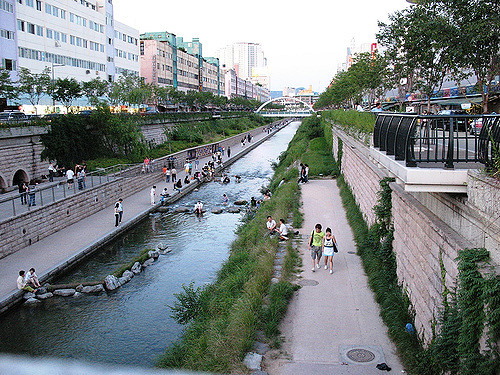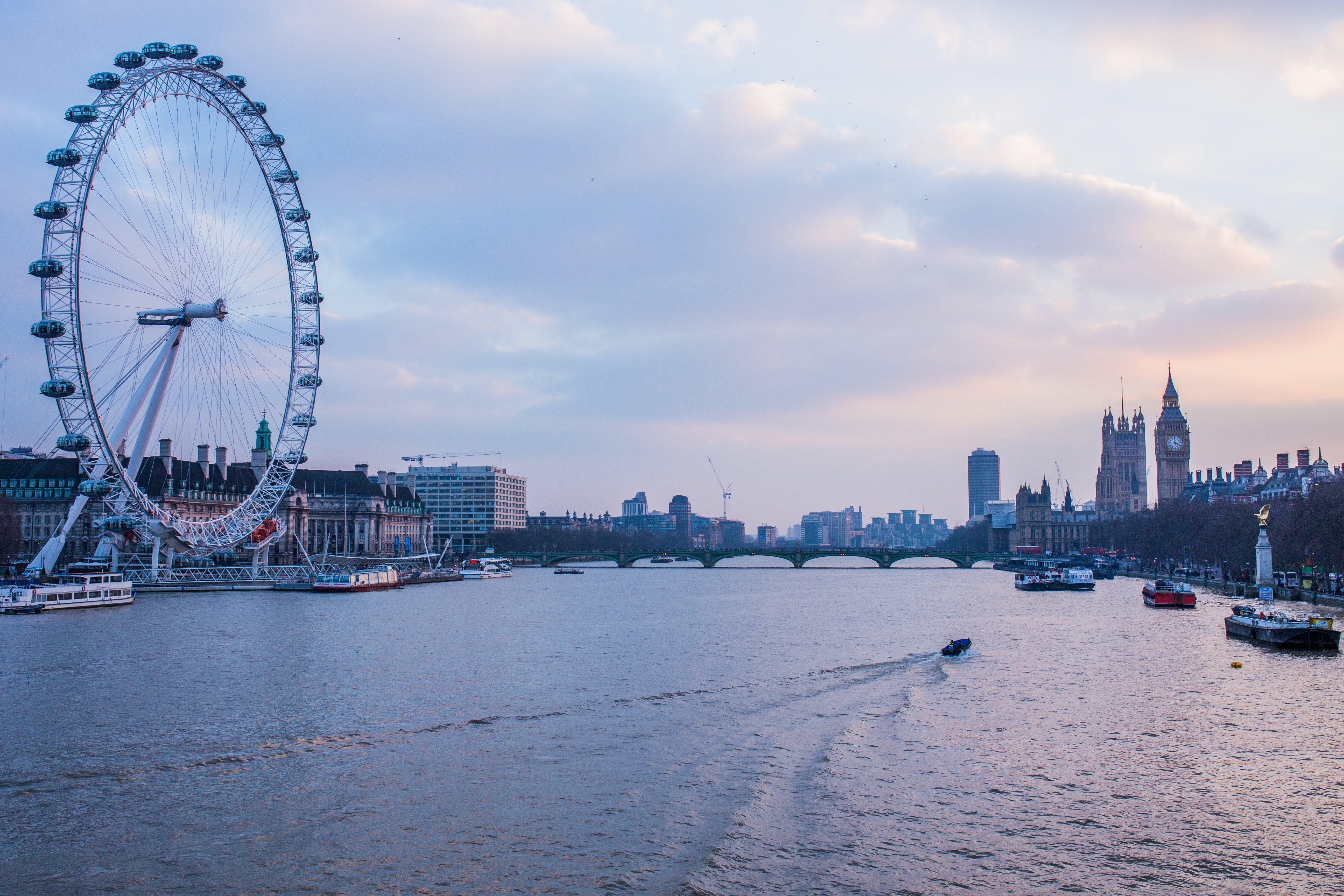Rivers– the main source of fresh water and biodiversity hotspots.
Despite all the benefits received from rivers, they get polluted. It is so surprising to know that many rivers are highly polluted due to improper sewage management. In the name of development, construction of dams affects the biodiversity distribution in & around the river.
Communities and cities now embrace their rivers, digging them out of the concrete, in the hopes that they retrieve back to life.
With depleting freshwater resources, restoring rivers would be a lifesaver. Here are 3 rivers which were restored back to life:
Cheonggyecheon River- The Green Heart of Seoul, South Korea.
It is one of the greatest urban design projects: the Cheonggyecheon River linear park. An 11Km green oasis in a concrete jungle, this inspiring urban renewal success underwent a dramatic transformation from a traffic-choked elevated freeway and concrete paved waterway into a lush corridor which attracts over 60,000 visitors daily.
After the Korean war, the population of Seoul increased. The development of the city resulted in polluting the Cheonggyecheon river even more. In 1968, the Korean government built a 5.6km long highway road over the river.
After years of negligence, the stream dried up. In 2003, mayor, Lee Myeong-Bak, initiated a project to remove the highway and restore the stream. The $281 million projects became a humongous urban renewal act. The project was successful even after a massive protest from the public.

When opened in 2005, the Cheonggyechan attracted a lot of tourists. The river returned back to life with even more benefits:
- Became a tourist spot and contributes up to 2.1 billion won ($1.9 million USD).
- It decreased the temperature of Seoul by 3.6 degrees.
- Restored the traditional routes.
- Reduced the number of private vehicles and public transport travellers increased by 15.1%.
- Increased overall biodiversity- In 2008, the number of flora increased from 62 to 308 species and fauna increased from 36 to 318 species.
- Controlled air pollution by reducing small particles by 35% from 74 to 48 micrograms per cubic meter.
The city government not only succeeded pacifying critics but also has set up a successful example of how to use restoration as an instrument of urban development.
Penobscot River Restoration by dam destruction- State of Maine, U.S.
Though construction of dams has numerous benefits they pose negative impacts on ecosystems.
While new proposals are made for dam constructions, in U.S., dams were removed to restore biodiversity.
Connecting 2,000 miles of river to the sea!
The Penobscot dam removal Project is a collaborative effort to balance fisheries restoration and hydropower production in Maine’s largest watershed.
The Project removed two dams that blocked fish migrations from the 18th century—the Great Works Dam and the Veazie Dam. In 2016, construction of a river-like bypass around the third dam on the river at Howland helped the fishes to access their lost habitat.
The dam destruction on the Penobscot River caps a 13-year, $25 million campaign involved six conservation groups, local Native American tribe, government and two hydropower companies to destruct three dams and upgrade power output on six other dams.

The Project started the destruction of the Great Works Dam on June 11, 2012. Followed by the removal of the Veazie dam at the head of the tide in 2013.
At the same time, dam owners built a fish elevator at the Milford Dam. Furthermore, dam owners increased hydropower generation at other locations within the Penobscot watershed. As a result, power generation increased in the river.
The Project benefits the watershed by:
- Developing a path 2,000 miles of river and stream habitat for endangered Atlantic salmon and other species of sea-run fish;
- Restoring eco-systems that benefit native plants and animals in the river, estuary, and the Gulf of Maine;
- Creating a cleaner, healthier river;
- Enhancing outdoor hobbies like- fishing, paddling, and wildlife watching; and Maintaining hydropower generation.
As a result of the project, the river now better supports Penobscot Nation tribal culture. Also, the project has also resulted in increased business and regulatory certainty for the dam owners.
A Dead river brought back to life- Thames, England.
Thames River- the second longest river in the UK was declared biologically dead in 1957. News reports in the 1950s described it as a vast, foul-smelling drain.
“No oxygen is to be found in the Thames for several miles above and below London Bridge.” the Manchester Guardian, reported in 1959
In the 1950s, the Thames river was more like a sewer. Post-war, Britain did not have the resources to fix the problem quickly.
The river came back from life zero!!
In the late 1960s, post-war recovery had begun and London’s sewage gradually improved. In the 1970s, along with the increase in environmental awareness, concerns grew over the pesticides and fertilisers that seeped into Britain’s rivers with every rainfall. So, tighter regulations were followed to improve London’s waterways.
Pollution from toxic metals in the river dropped since the early 2000s, according to David Morritt, an expert in aquatic ecology at Royal Holloway, UK.
Due to strict regulations and environmental concern, the fishes came back. As a result, over 125 species of fishes thrive in the Thames, up from almost none in the 1950s.

A new threat: In 2015, one Royal Holloway study found that up to 70% of flounder in the Thames had bits of plastic in their guts. It’s difficult to handle plastic because there are so many sources. But new technologies are coming up to handle plastic waste.
These river restoration projects set up historical examples for the world. Many rivers and lakes are polluted heavily with no mark of life in them. With government and people support even more river restoration projects could lead to success stories just like these rivers.

